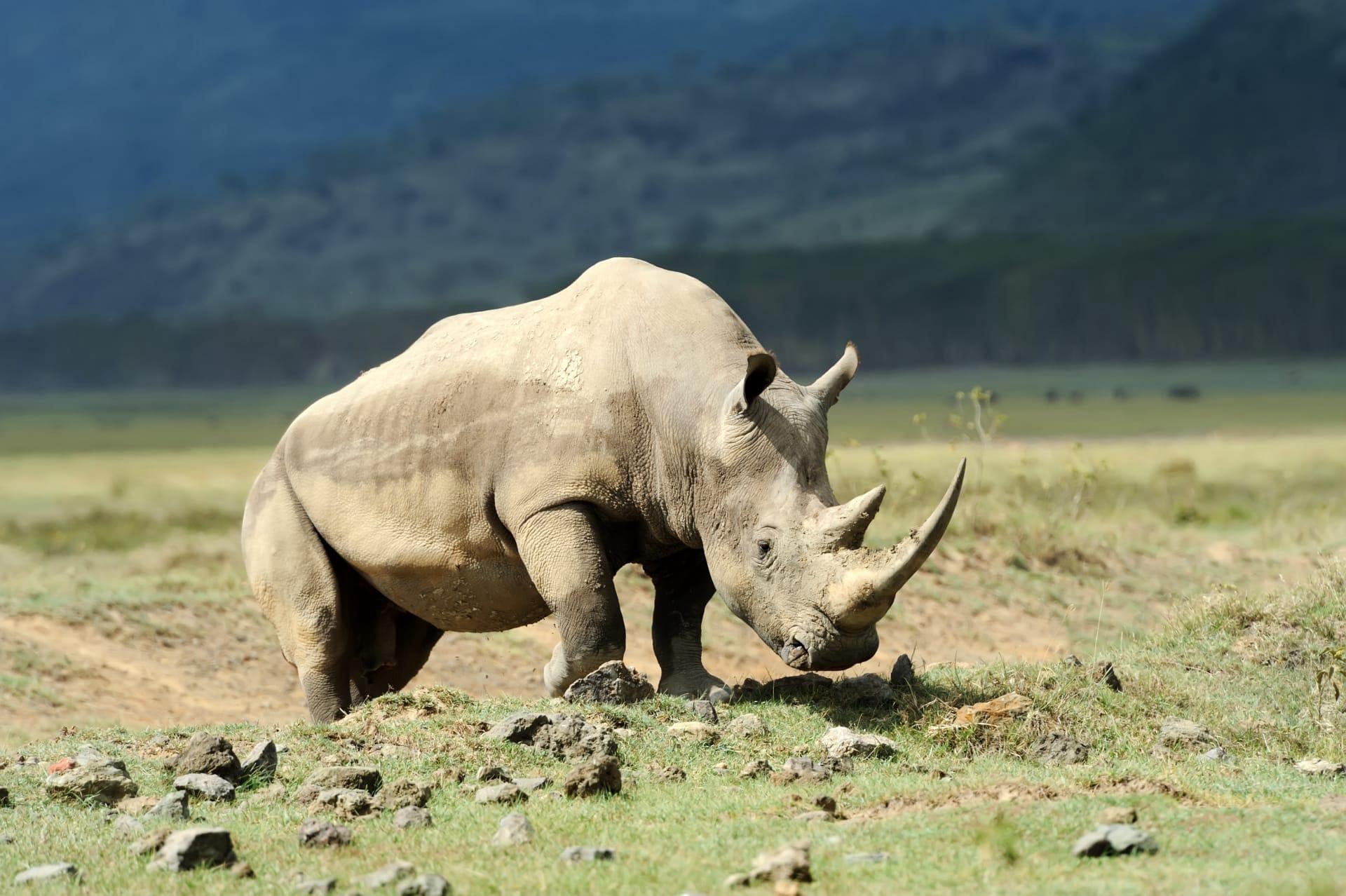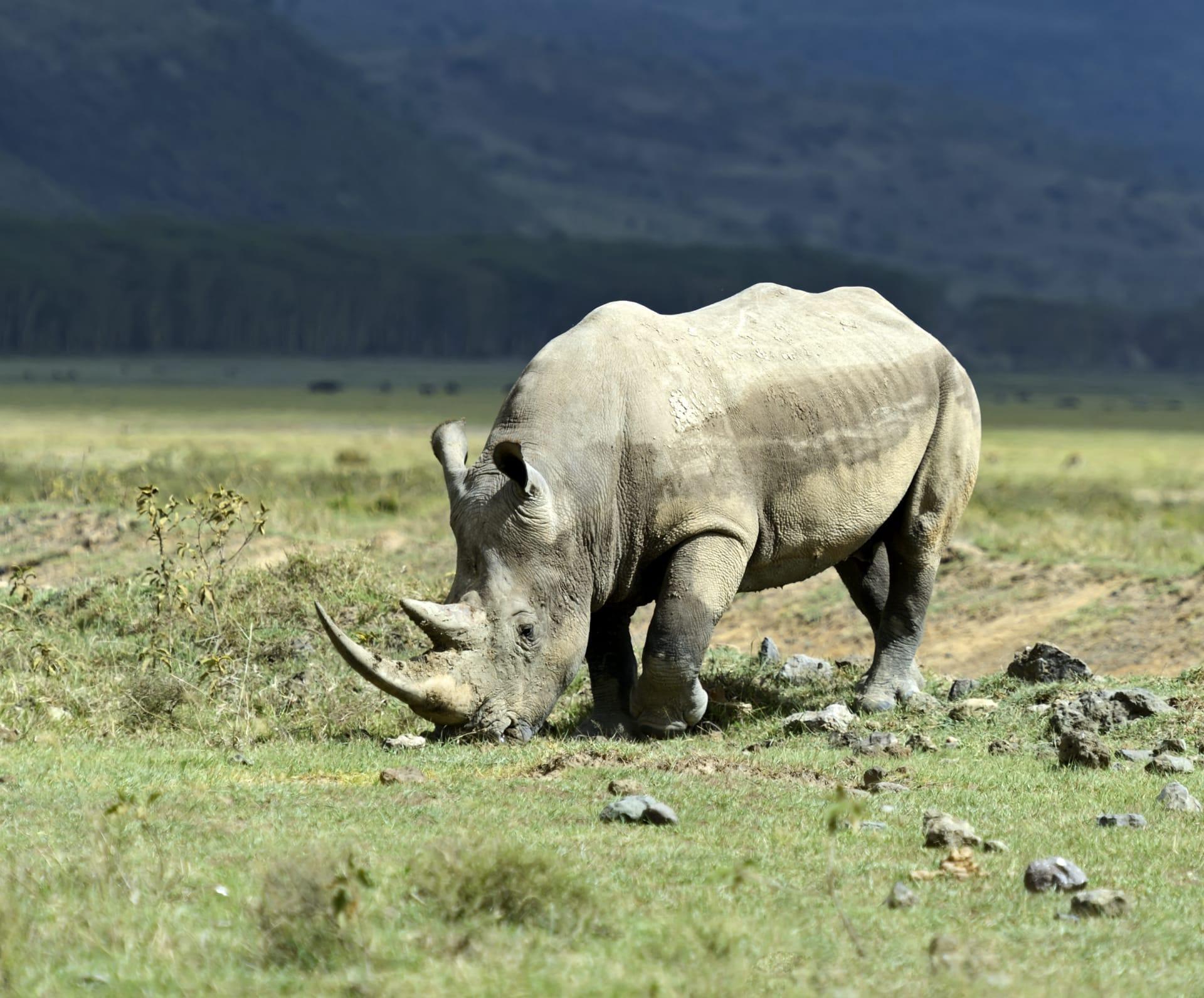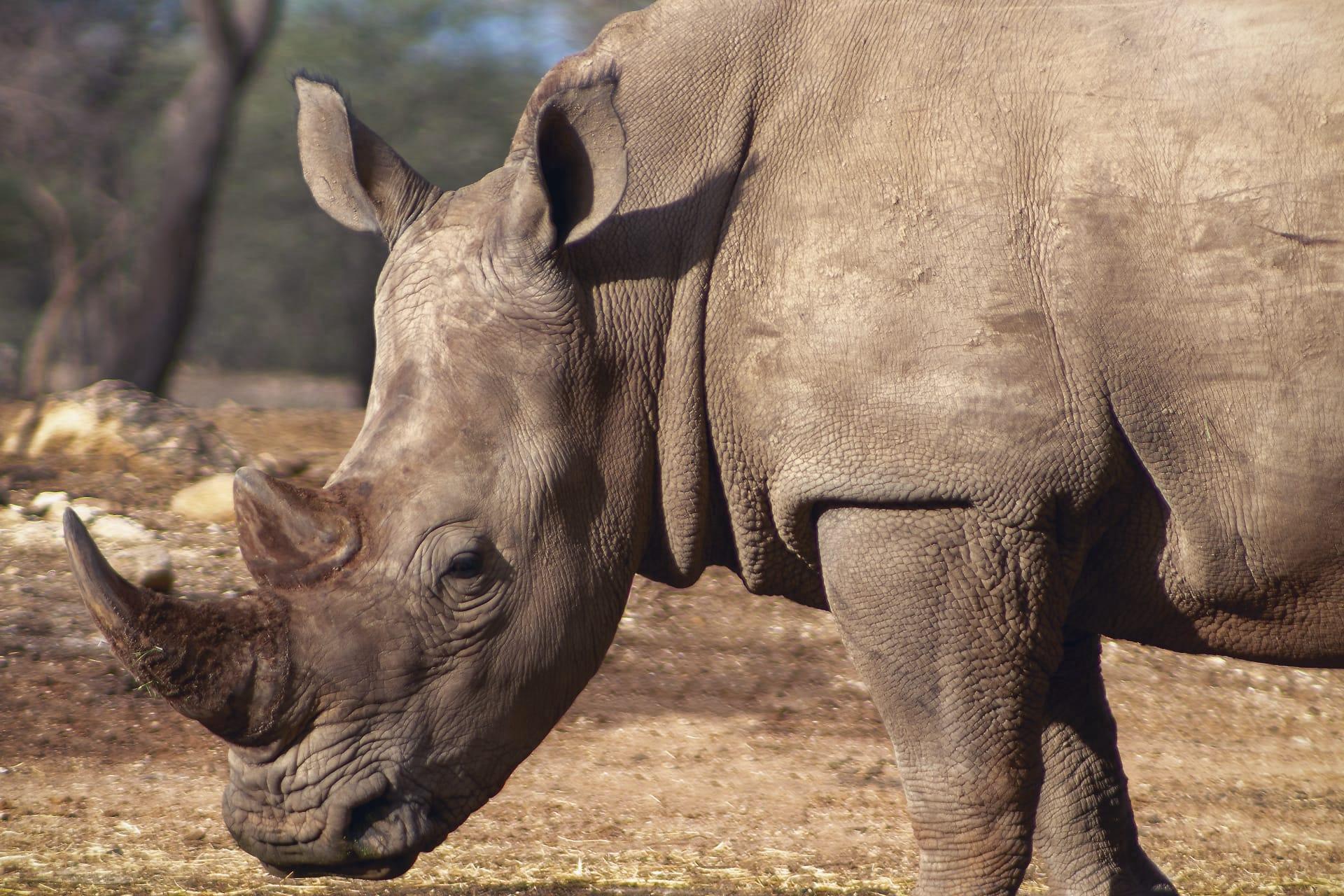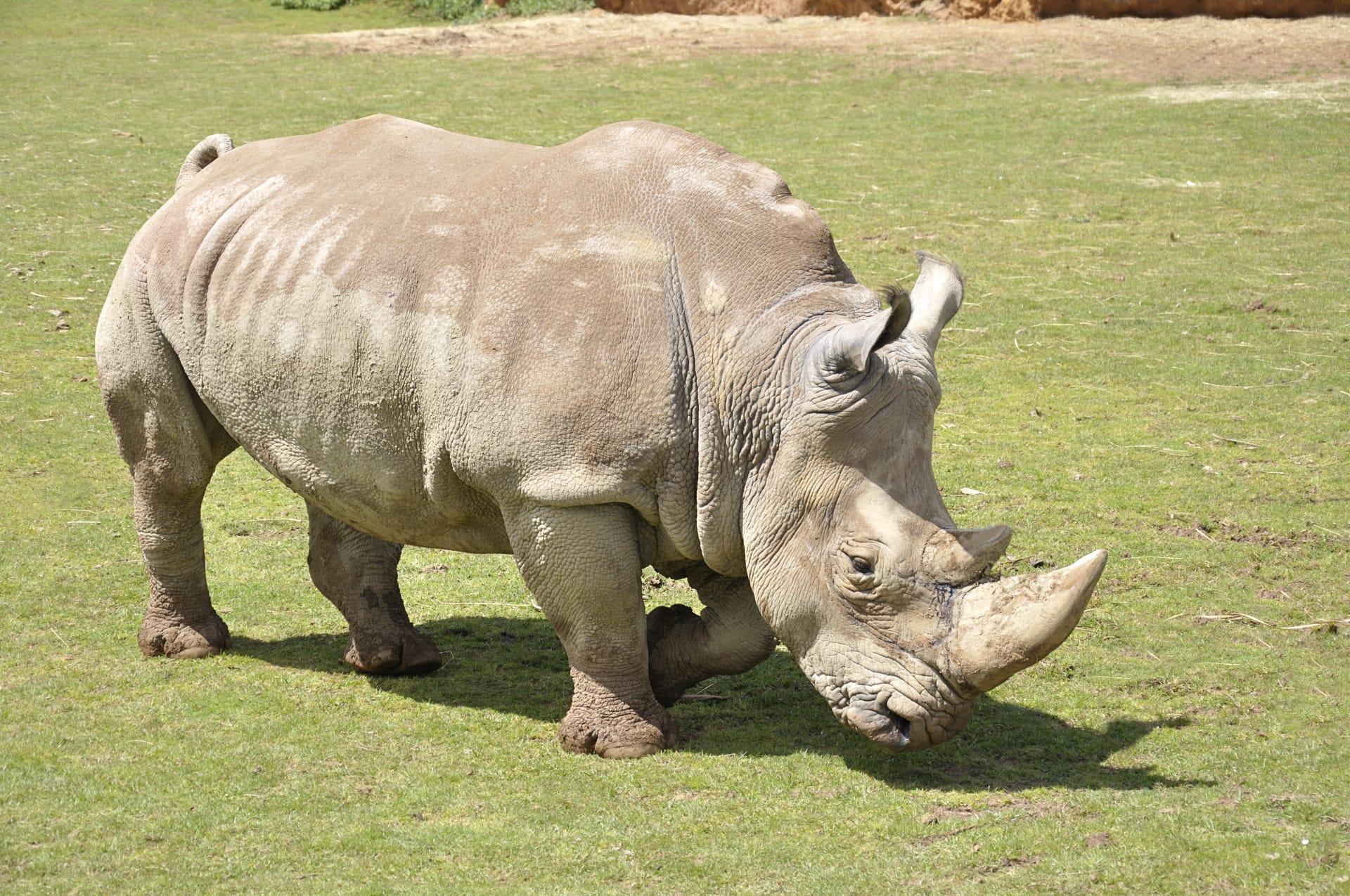White Rhinoceros
- Home /
- Mini Encyclopedia /
- Animal /
- White Rhinoceros
1
The White Rhinoceros, scientifically known as Ceratotherium simum, is a majestic creature belonging to the family Rhinocerotidae. This species is further divided into two subspecies: the Southern White Rhinoceros (Ceratotherium simum simum) and the Northern White Rhinoceros (Ceratotherium simum cottoni). The Southern subspecies is notable for its slightly rounded back and longer skull, while the Northern subspecies, which is critically endangered, has a straighter back and slightly shorter skull. Both subspecies have two square-shaped lips suitable for grazing. The White Rhinoceros stands out with its massive body, large head, and two prominent horns, the front one being larger and often reaching over 60 cm in length.
The White Rhinoceros is primarily found in two regions of Africa. The Southern White Rhinoceros, more abundant of the two, predominantly inhabits South Africa, with significant populations also found in Zimbabwe, Namibia, and Kenya. This subspecies has seen a remarkable recovery due to conservation efforts, now numbering around 18,000 individuals. On the other hand, the Northern White Rhinoceros is alarmingly close to extinction in the wild, with only two females known to be alive, both in captivity in Kenya. Historically, this subspecies roamed over parts of Uganda, Chad, Sudan, the Central African Republic, and the Democratic Republic of the Congo. Their numbers have drastically declined due to poaching and civil war impacts.

2
Question: Is it true that the horns of White Rhinoceroses are used in traditional medicine and are the reason for their poaching?
Answer: Yes, unfortunately, this is a common misconception and a significant reason behind the poaching of White Rhinoceroses. Their horns are highly valued in some traditional medicine practices, particularly in Asia, though scientifically, rhino horns have no proven medicinal properties. Rhino horns are made of keratin, the same material as human nails and hair, and have no unique health benefits. The demand for these horns has led to a severe decline in White Rhinoceros populations, with poaching being a persistent threat, particularly in countries with weaker wildlife protection laws.

3
The White Rhinoceros has adapted several strategies to survive in its natural habitat. One key adaptation is its large size, which deters most predators. Adult White Rhinos can weigh up to 2,300 kilograms and are the second-largest land mammal after the elephant. Their size provides them with a significant advantage against potential threats. Another survival strategy is their social structure. White Rhinos are generally solitary animals, but females are often seen with their young. This maternal bond is crucial for the calf's survival, as the mother provides protection and teaches the calf essential survival skills. Additionally, White Rhinos have a keen sense of smell and hearing, which helps compensate for their relatively poor eyesight. These senses are vital for detecting predators and other dangers in their environment.
White Rhinoceroses are also well-adapted to their habitat in terms of diet. They are pure grazers, feeding primarily on grasses. Their wide, square lips are specially adapted for grazing. They can consume up to 120 pounds of grass per day, requiring them to spend a significant portion of the day feeding. This diet allows them to thrive in the savannas and grasslands of Africa, where they play a crucial role in the ecosystem by impacting the grassland structure and nutrient cycle.

4
The White Rhinoceros plays a pivotal role in its ecosystem. As a mega-herbivore, its grazing habits significantly shape the landscape. By consuming large quantities of grass, they help maintain open savanna and grassland habitats, preventing these areas from becoming overgrown. This activity benefits other species by creating a more diverse habitat structure. Furthermore, their dung is a vital component of the ecosystem. It acts as a fertilizer, enriching the soil and aiding plant growth. The dung also serves as a resource for dung beetles and other insects, which in turn support a variety of predators and scavengers.
In terms of their ecological role, White Rhinoceroses also serve as an "umbrella species." Conservation efforts aimed at protecting them inadvertently benefit a wide range of other species that share their habitat. For example, protecting the large tracts of land needed for their survival helps preserve entire ecosystems, which include numerous other plants and animals. Moreover, their presence in these ecosystems can be a barometer for environmental health. A thriving White Rhinoceros population often indicates a healthy and well-managed habitat, which is beneficial for many other species.

5
Film: "Rhino Dollars" is a powerful documentary that highlights the plight of the White Rhinoceros. Released by France in 2018, it delves into the dark world of rhino horn trafficking. The film exposes how this illegal trade fuels the relentless poaching of White Rhinos, driving them towards extinction. It combines on-the-ground reporting with undercover investigations, providing a comprehensive view of the challenges faced in conserving these magnificent animals.
Book: "The Last Rhinos" by Lawrence Anthony, a South African conservationist, and Graham Spence, published in 2012. This book chronicles Anthony's extraordinary journey to save the Northern White Rhinoceros, one of the world's most endangered species. Set against the backdrop of the Congo's raging war, it's a tale of conservation, adventure, and the fight to save the last of these majestic creatures from extinction.
Book: "Rhino: At the Brink of Extinction" by Anna Merz, published in the United Kingdom in 1991. This book offers an insightful look into the life of White Rhinoceroses and the struggles faced in their conservation. Merz, a renowned conservationist, shares her experiences in establishing a rhino sanctuary in Kenya. The book sheds light on the complex relationship between humans and rhinos, emphasizing the need for immediate action to ensure their survival.